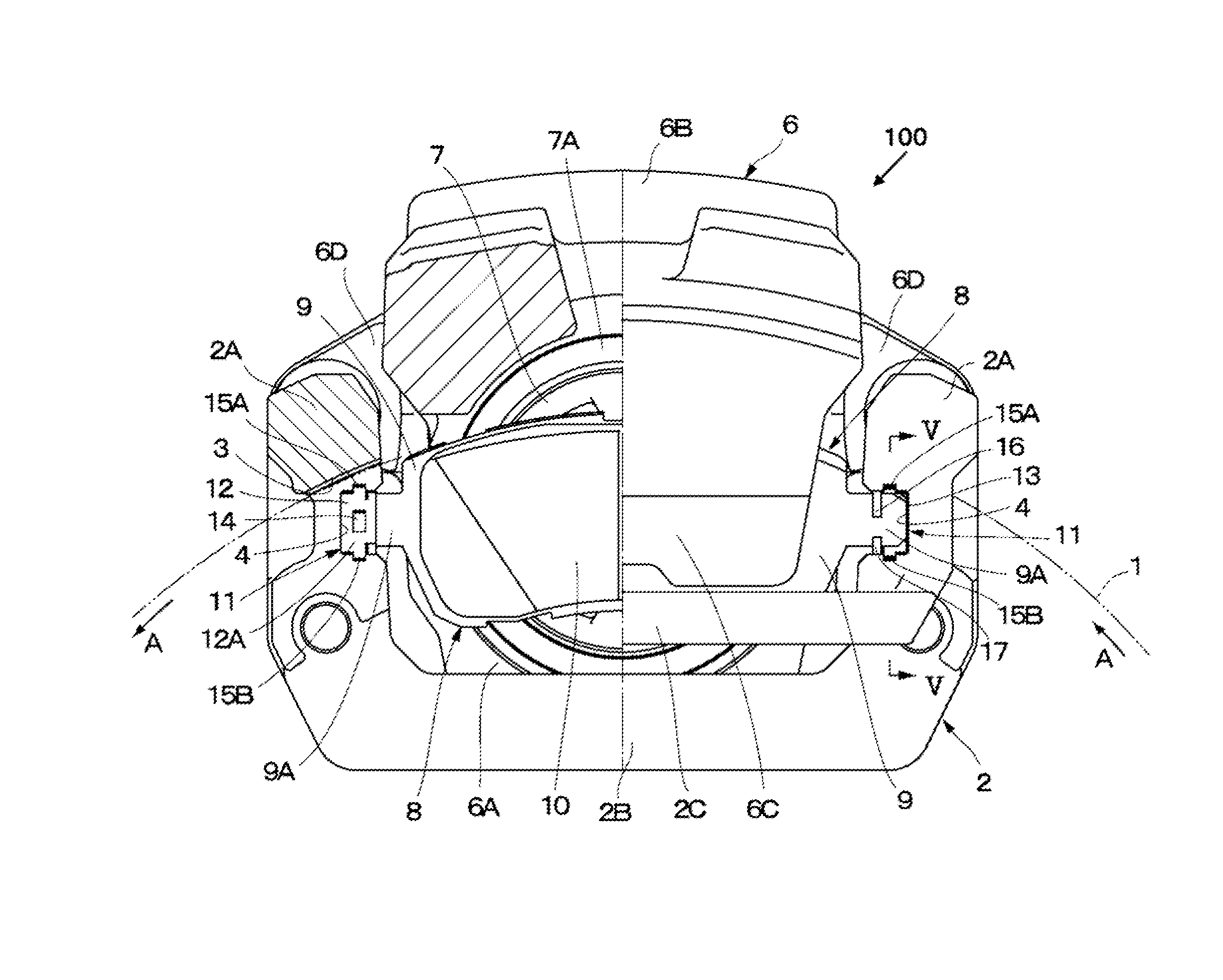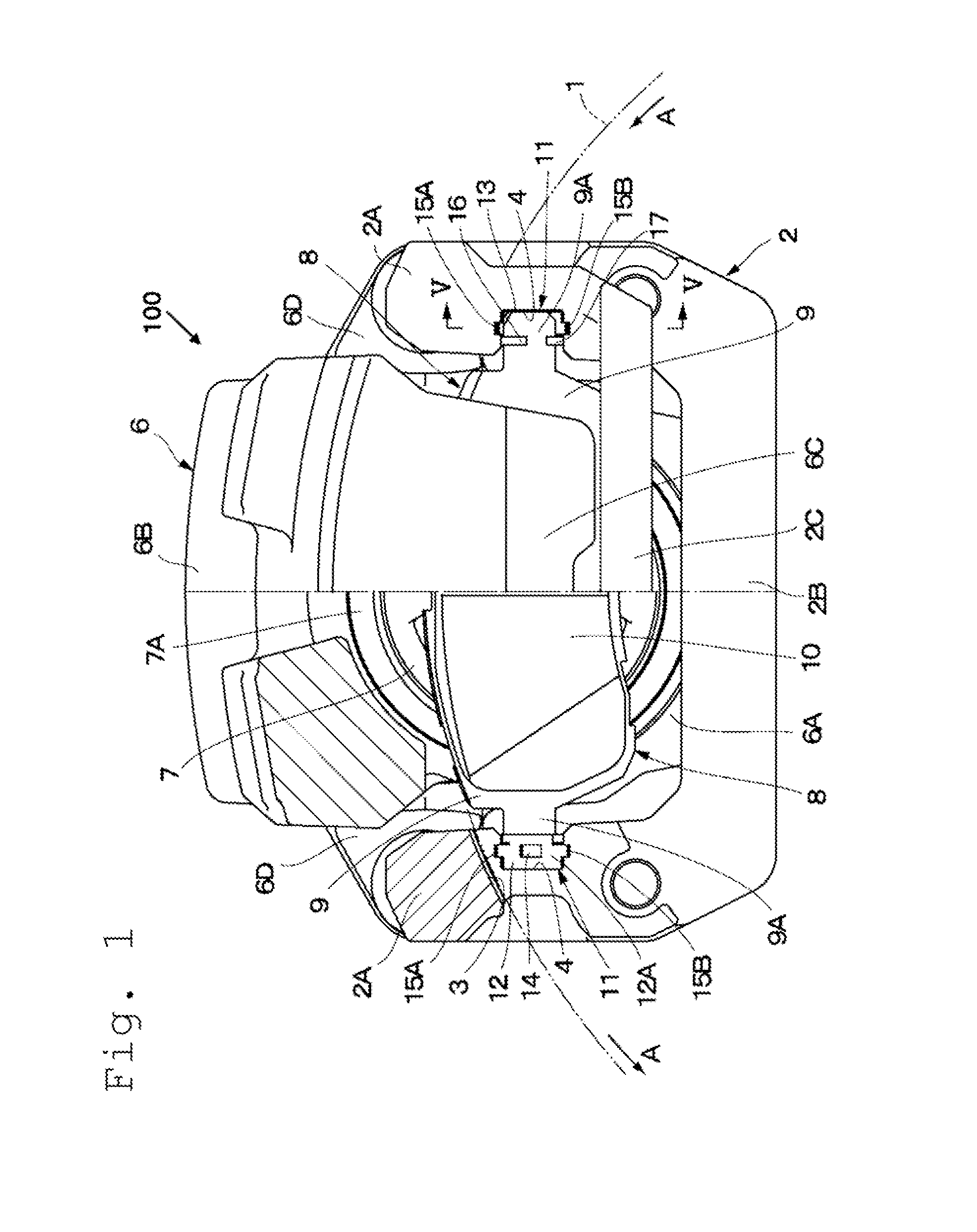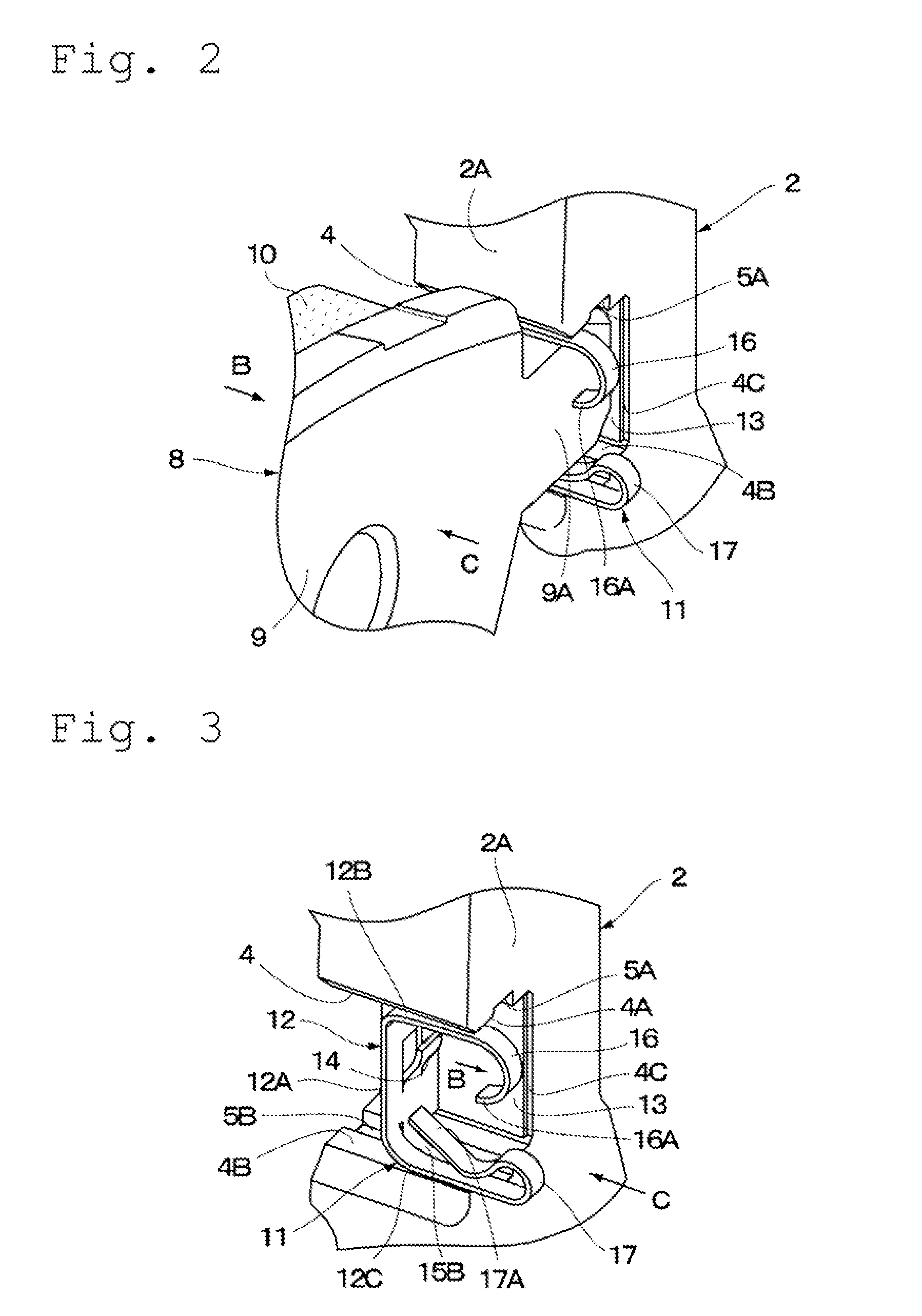Disc brake apparatus
- Summary
- Abstract
- Description
- Claims
- Application Information
AI Technical Summary
Benefits of technology
Problems solved by technology
Method used
Image
Examples
first embodiment
[0036]FIGS. 1 to 8 illustrate a disc brake apparatus according to a In description of this embodiment, a floating-type disc brake apparatus is taken as an example. However, the present invention is applicable also to what is called an opposed-type disc brake apparatus, in which a caliper having a cylinder and a piston respectively provided on both sides of a disc rotor so as to oppose each other is fixed to a non-rotating portion of a vehicle. In FIG. 1, a disc rotor 1, which is rotatable, is illustrated. The disc rotor 1 rotates, for example, in a direction indicated by the arrows A illustrated in FIG. 1 together with wheels (not shown) when a vehicle runs forward and rotates in the direction opposite to the direction indicated by the arrows A when the vehicle moves backward.
[0037]A caliper 100 is a floating-type caliper as an example of a caliper according to the present invention, and includes a mounting member 2 and a caliper main body 6 which is slidably provided to the mounti...
third embodiment
[0096]Specifically, the biasing member 31 used in the third embodiment is provided between the arm 2A (pad guide 4), which is located, for example, on the disc-incoming side, of the two arms 2A of the mounting member 2, illustrated in FIG. 1, and a corresponding one of the ear portions 9A of the friction pads 8. In this manner, the biasing member 31 on the disc-incoming side constantly biases one of the ear portions 9A of each of the friction pads 8, which is located on the disc-incoming side, toward the disc-outgoing side of the disc rotor 1 (in the direction indicated by the arrow A illustrated in FIG. 1) with a weak force by the circumferential spring part 35A provided to the far-side plate portion 35. Then, each of the ear portions 9A located on the disc-outgoing side of the disc rotor 1 is elastically pressed against the ear-side wall surface 4C of the pad guide 4 by a biasing force of the circumferential spring part 35A.
second embodiment
[0097]In this case, for example, the biasing member 21 described in the second embodiment and illustrated in FIGS. 9 and 10 may be provided between the arm 2A (pad guide 4) of the two arms 2A of the mounting member 2, which is located on the disc-outgoing side, and a corresponding one of the ear portions 9A of the friction pads 8. Moreover, a biasing member, which is approximately similar to the biasing member 31 except that the circumferential spring part 35A is not provided to the far-side plate portion 35, may be provided.
[0098]The pad-return portion 36 serving as the first spring part is extended integrally from an end of the upper concave-portion facing plate portion 34A of the main body portion 32 of the biasing member 31, which is on the side opposite to an abutment-plate portion 37 through an upper claw portion 38A described below therebetween. The pad-return portion 36 is formed at a distal end of the concave-portion facing plate portion 34A so as to be bent at an angle inw...
PUM
 Login to View More
Login to View More Abstract
Description
Claims
Application Information
 Login to View More
Login to View More - R&D
- Intellectual Property
- Life Sciences
- Materials
- Tech Scout
- Unparalleled Data Quality
- Higher Quality Content
- 60% Fewer Hallucinations
Browse by: Latest US Patents, China's latest patents, Technical Efficacy Thesaurus, Application Domain, Technology Topic, Popular Technical Reports.
© 2025 PatSnap. All rights reserved.Legal|Privacy policy|Modern Slavery Act Transparency Statement|Sitemap|About US| Contact US: help@patsnap.com



